Moscow and Minsk will multiply the former strength of the air defense of fraternal Serbia: C-300, "Baikals" and "MiGs" for Belgrade
A mourning ceremony commemorating the 24 anniversary of the beginning of the massive rocket and air strike of the combined NATO air forces against civilian and military targets of the Federal Republic of Yugoslavia took place in Hrédilicce Gorge 2017 on March 18. Under the elements of managed and unmanaged weapons in the tragic 99, more than 2 of thousands of our Slavic brothers on Serbian land perished. In the course of that bloody action called the “Allied Force” on the numerous military and civilian objects of Serbia, which has an area of 88000 square. km, 50 was launched thousands of different missiles, among which were more than 700 TKG UGM / RGM-109C "Tomohawk Block IIA / III" and more 60 strategic air-launched cruise missiles (ALCM) AGM-86C CALCM Block I. Two types of missiles The famous Aegis ships were launched by all, the British Swlesure class Splendid multi-purpose nuclear submarine and the B-52 strategic bomber bomber submarines launched.
Moreover, NATO Allied Force involved 1259 units in the operation. tactical aviation with high-precision suspension missile and bomb weapons of short and medium range. Having destroyed most of the strategic military facilities of Yugoslavia from the signal of war criminals of the NATO Secretary General Javier Solan and the ex-commander of the NATO Armed Forces in Europe, General Wesley Clark, American and West European tactical aircraft launched targeted attacks on objects of the energy sector and the oil refining industry, bus stations, railway stations, television centers, telephone exchanges, residential areas of cities, etc. In total, 995 objects were destroyed throughout the republic. After the terrible bombardment of the FRY by NATO aviation in Kosovo and Metohija, a real genocide of Serbs, Montenegrins and Gypsies began, carried out by more than 200 thousand Albanian robbers, criminals and terrorists who received permission to enter the above regions of Yugoslavia. The actions of the gangs were supervised by NATO experts. As a result, another 889 people were killed, and 722 went missing. 350 thousand people had to leave the territory of Kosovo and Metohija, and another 50 thousand lost their homes. This is how the Slavic pearl in the center of the Balkans was crushed. As a result of the bombing, the total damage to the country amounted to $ 30 billion.
Serbian Prime Minister Alexander Vucic recalled the tragic events of 18-old prescription at the mourning ceremony, completely eliminating the likelihood of entering the North Atlantic Alliance, who tried to "throw the republic on his knees", he also promised the realization of the state's ambitious defense plans that will not leave The answer is any act of aggression against modern Serbia.
No matter how sad it was for us to realize this, but the economically and geopolitically weakened Yeltsin Russia of the late 90s did practically nothing to oppose NATO in order to protect Yugoslav airspace from massive missile strikes from Western tactical aviation. According to some reports, there was only a notification of the General Staff of the FRY, as well as the RTV and air defense of the republic, about the approach of American carrier-based aviation, tactical aviation of the Air Force of Western European countries, strategic missile-carrying bombers and the estimated trajectory of the Tomahawks. The data was transmitted both through the Yugoslav intelligence services in Italy, France, Greece, Macedonia, Bosnia and Herzegovina, and through military channels from the combat NK of the Russian Navy in the Adriatic Sea and the Russian constellation of reconnaissance satellites. Meanwhile, it was only a drop in the ocean of support that Moscow was unable to provide. The fact is that even with the existing 2K12 Kvadrat, S-125 Neva-M, Strela-1 / 2/10 air defense systems, as well as the artisanal Prasha air defense systems, the Serbs were able to intercept the F-117A Nighthawk, 46 "Tomahawks" and several dozen drones, including "Predator" (later NATO pilots talked about the high network-centric capabilities of the Yugoslav air defense in comparison with the Iraqi). The "duel" against Western air attack was lost only because of the low performance characteristics of the above anti-aircraft missile systems, which are in service with the air defense forces of the FRY (all of them had only one target channel and low noise immunity). At that time, Yugoslavia was in dire need of 6-channel anti-aircraft missile systems of the S-300PT / PS family; a system of three to five divisions could radically change the balance of power in the republic's airspace far from in favor of NATO. Alas, it didn't happen...
The unfortunate resolution of the UN Security Council on the imposition of an arms embargo on the Federal Republic of Yugoslavia did not play into the hands of Belgrade either. This document, which finally hampered Yugoslavia’s defensive capabilities in front of aggression, was also “safely” signed by the Russian Federation. Russia, after all, always relies on the UN legal framework, right ?! And our overseas "friends" act in a roundabout, that's the whole "song"! Consequently, the "Three Hundreds" were not delivered. That is exactly what the clever and strategically thought out calculation of the NATO command at the Brussels headquarters of this military and political gathering was made of. President Slobodan Milosevic made a huge mistake, to his great regret, in his time: in 1996, the Russian Federation offered Yugoslav anti-aircraft missiles C-300 to repay the USSR’s debt to the Socialist Federal Republic of Yugoslavia, but S. Milosevic refused that eventually led to horrific consequences and a conversation in the language of force. Otherwise, there would be tens or hundreds of NATO Falcons falling from the sky and the United States Strike Needles.
The above-mentioned plan to increase the combat capability of the Serbian Armed Forces provides for a comprehensive modernization of all types of troops, but the main direction in which the future president of the country, Alexander Vucic (the current prime minister of Serbia) plans to move, is to form a worthy anti-aircraft and anti-missile component of the 7 millionth Balkan state. Like no one else, Alexander Vucic remembers the three spring months of 1999, and especially 23 of April, when his mother Angelina miraculously survived during a NATO air strike on a television center in Belgrade, and when he almost died, fortunately, being late for an interview CNN as Acting Minister of Information of Yugoslavia. Despite his interest in strengthening economic ties with the EU, Vucic is firm in his position regarding the need to return Kosovo and Metohija under Belgrade’s jurisdiction. This fact alone indicates a possible confrontation in the region.
The initial stage of modernization of the Serbian air defense forces will be receiving for free use of 2's battalions of 9K37 “Buk” battalions of 12 9А310 9 self-propelled fire systems (SOW), while the transfer of 39XXUMX starting and charging systems is missing charge the LDS with the help of a transport vehicle, which will increase the recharge time from 12 to 16 minutes). It is possible that the 9-18 “Dome” radar detector will be transmitted. Considering that the 9C18 RLO has good energy and performance parameters with an 120 km fighter-target detection range and aerial tracking capacity - 75 air targets, it will be possible to track the airborne 9X470 gearbox in the vicinity of Belgrade. tactical situation over the eastern part of Bosnia and Herzegovina, as well as Croatia, which are the most missile-dangerous areas.
Twelve 9А310 self-propelled fire installations, which receive target designation from the 9С470 command and control station, are sufficient to establish a good “anti-aircraft umbrella” in Belgrade and its environs, which will create a flightless zone at a distance of 30 km and in the altitude range from 25 to XNUM max. with 18000 - 18 "Tomahawk", taking into account the use of cruise missiles of EW type F / A-20G "Growler" on the part of the approach. This figure may increase by one and a half times due to the presence in the Serbian air defense of such complexes as “Prrasha” and “Strela-18”, which receive target designation from the DRLO radar. At the same time, the massive strike by the barely noticeable tactical ultra-long-range missiles AGM-10B JASSM-ER and PRLR AGM-158 HARM two "Bukov" divisions simply "will not be taken out", and Alexander Vucic, being in the post of defense minister of the country from 88 to 2012, understands this very well, and therefore initiated the second stage of the Serbian air defense upgrade.
Here anti-aircraft missile systems of the C-300P and C-300В families come to the fore. Vucic discussed the possibility of a deal to acquire two divisions of these complexes and one regimental command post with Vladimir Putin and Alexander Lukashenko. In the opinion of the future head of Serbia, such a purchase will be “a solution for many years to come” for the state. The question arises: is there only enough two “Three Hundreds” for Belgrade for reliable air defense / anti-missile defense of the country's airspace, as well as the possibility of stopping the enemy’s air attack actions on long-range lines?
The length of Serbia from the southern border with Macedonia to the northern border with Hungary is about 480 km. Consequently, for effective defense against enemy tactical aviation operating at medium and high altitudes, one C-300PMU-2 division with an 200 km damage radius and one C-300PS early modification battalion with an 75 km range is quite sufficient (the first can be deployed under Belgrade, the second - in the southern part of the state, near the city of Leskovac). These divisions will be able to reliably close airspace from a wide range of high-precision weapons and unobtrusive enemy aircraft almost over the entire territory of Serbia. Moreover, thanks to the C-300PMU-2, it will be possible to destroy promising hypersonic air attack weapons at speeds up to 10000 km / h unlike “Buk”, which is capable of destroying air objects at a speed of just 3000 km / h. It’s not bad, but the ability to repel massive blows with “Axes” and other low-level “invisibles” like AGM-158B will still be seriously lame, because the restrictive concept of radio horizon has not been canceled yet (for 300, it is 35-38 km), and the canal of the two divisions is mediocre - all 12 simultaneously fired at targets.
Only one conclusion can be drawn from this: the Serbian Ministry of Defense will have to fork out well. In particular, it will take at least 2 of the C-300PMU-1 division, which are responsible for the most rocket-dangerous western air routes. C-300PS is excluded here, because the minimum height of the targets hit in 25 meters does not cover the low-altitude capabilities of modern cruise missiles (near 20 m), while the PMU-1 operates on objects at altitudes 7-10 meters. The speed of the targets hit in the C-300PS also does not shine and is only 4700 km / h against 10000 km / s in the PMU-1. There will also be a demand for a “trimmed” division of X-NUMX-x batteries of the Antey-2 C-300BM anti-aircraft missile system. One of the batteries "Anthea" can take up combat duty near Belgrade: it will control the Bosnian and Romanian air routes. The second is in the southern part of Serbia: Albanian and Greek air directions (which can be conditionally combined into a Mediterranean operational direction) will be in its area of responsibility; precisely from here, in the event of an aggravation of the military-political situation on the Balkan Peninsula, one can expect a massive strike by the sea-based high-precision rocket armament.
Due to the pronounced ability to intercept high-speed ballistic and aeroballistic objects with a small radar signature (EPR - 0,02 m2), the Antey-300 C-2500BM can become an indispensable promising asset for Serbia to protect against such weapons as: operational tactical ballistic missiles. ATACMS (MGM-140B / 164B), numerous modifications of anti-radar missiles planning guided bombs of the AGM-154 JSOW family, as well as 3-3,5 fly-by-flight guided missiles M30 GMLRS and XM30 GUMLRS. Moreover, the C-300BM has the best noise immunity and computational capabilities of the updated element base, and is also equipped with more long-range and high-speed two-stage 9М82М anti-missiles with a range of 200 km, a flight speed of 2600 m / s and a maximum available 30 overload unit. The most important feature of the C-300ВМ is the possibility of destroying hypersonic aerospace elements of high-precision weapons, which have a speed of 16200 km / h, which is 2 times faster than the calculated speed of American cruise missiles that can be developed on the basis of the X-51A Waverider within the framework of the ambitious concept of BSU (“Fast Global Impact”). By adopting the Antey-2500 air defense force, Serbia can get a powerful deterrent to cool especially hotheads in the NATO command.
In the same turn, the 2 ZRDN C-300PMU-1 and 2 C-300В batteries will cost Belgrade no less than 700 - 900 million dollars, which corresponds to the annual defense budget of Serbia. Very relevant here could be either a contract at a preferential price on “Three Hundreds” alone, or the provision of a 1,5-2 billion loan from the Russian side to purchase the above-mentioned air defense systems, as well as additional radio equipment for proper information illumination of the air defense system. At the moment, the radio engineering units of Serbia also cannot be attributed to the strength of informational awareness of the country's air defense. Undoubtedly, after March-June 1999 of the year, a certain number of UHF type AN / TPS-70 (radar S-range from Northrop-Grumman with a range of 450 km), AN / TPS-63, S-605 / 654 from Marconi, as well as meter P-12 Yenisei and P-14F Lena and P-18 Terek, but they practically do not meet the challenges of a modern air theater, and their life has almost expired.
The only modern radars remaining in service with Serbian RTV are American AN / TPS-70, but their number is very limited. Moreover, the state radars have a very low, by modern standards, elevation scanning zone (0-20 °): for this reason, the station does not have a huge “funnel of the dead zone” of the survey in the upper hemisphere, which reaches 140 degrees. From this we conclude that Serbian RTV needs such advanced radio engineering systems as a centimeter BBO 96Л6Е (maximum angle of elevation of the 60 ° beam) or 59НХNUMXМ “Opponnik-G” with similar parameters of the field of view and the ability to look for low-orbit space objects.
The necessity of acquiring the regimental command post for the "Three Hundreds" Alexander Vucic also mentioned not by chance. Apparently, we are talking about an automated command and control center for the actions of air defense missile defense systems “Baikal-1МЭ” or “Polyana-D4М1”. For the Serbian air defense, this is a very important issue, since the C-125 and Strela-10 complexes remain in service and the Belarusian Buk and Russian Buk-М2 or Buk-М3 are planned to be acquired. ACS “Baikal” (or “Polyana”) is able to unite these complexes in a network-centric relationship with C-300PMU-1 or C-300ВМ. Consequently, when repelling a massive rocket-air strike or opposing the tactical aviation of the enemy, “Three Hundreds”, “Buki”, C-125 and “Arrows” will be able to act in a single integrated information space (according to the same principle as “Aegis”) in the “Link-16” system). The radio equipment of the same C-300PMU-1 (64H6E HLW and 76H6 HLW) will act as DRLO instruments for all other types of integrated air defense missile systems.
In the presence of an automated control system “Polyana” or “Baikal”, such unpleasant and dangerous tactical “flaws” as the “farm” construction of an air defense system and the irrational expenditure of anti-aircraft guided missiles at enemy targets are completely excluded. For example, calculations of the Buk anti-aircraft missile systems will be notified via the telecode radio channel of the enemy’s targets already captured and intercepted by the Three Hundred, thereby enabling them to switch to fighting other free air attacks. The automated control system increases the productivity and survivability of the brigade / regimental link several times. For the Balkan theater of operations and the projected amount of anti-aircraft missiles in the armament of Serbia’s air defense, one “Baikal” will be more than enough. Managed by the 5-11 operating personnel, the Baikal automated control system is capable of simultaneously setting up 500 air routes and controlling various types of 24 SAM systems. The instrumental range in 3200 km, the maximum speed of the targets being processed in 18432 km / h and the altitude limit in 1200 km indicate the immense prospects of this command and control point in more advanced long-range missile defense systems. To protect the Serbian sky, this ACS is a unique concept for building a powerful echeloned aerospace defense.
The expenses of the Serbian Defense Ministry are unlikely to end there. The formation of a reliable "antimissile shield" will not be crowned with success if the self-propelled anti-aircraft missile / artillery complexes of the Tor-М1 / 2, Tanguska-Cnumx or Tungusk families are neglected. They overlap the 1-3-kilometer “dead zone” of medium-range and long-range complexes, providing complete single broken through elements of the enemy’s high-precision weapons. These systems are absent in the structure of the Serbian air defense. Another item of expenditure after the possible procurement of the Tunguska and Thor complexes will be their integration into a unified system of tactical communications, organized by the Baikal automated control system. This will require the acquisition of more than one, but several, unified battery command points 5C9 "Ranzhyr", which are the downstream link operated by the Baikal automated control system. One UBCF “Ranzhir” is able to provide target distribution only for 737-x consumers located at a distance of 4 km.
The plans for the formation of a full-fledged echeloned air defense-missile defense system of Serbia are confirmed by the fact that during the negotiations between A. Vucic and V. Putin the question was raised about the possibility of acquiring a certain number of 2K22М1 “Tungusska-М1” anti-aircraft missile and artillery systems. These complexes are unique to this day. Despite the maximum speed of the intercepted target of just 1800 km / h, the possibility of destroying subsonic strategic CG RGM-109E "Tomahawk", AGM-86C ALCM, low-profile tactical CW JASSM-ER and KEPD-350 "Taurus", as well as tactical missile missiles, remains AGM-65 "Maverick" range. "Tungussko-M1", equipped with modules Hour tactical information from outside the radar AEW via manual "Rankings" able to fire on subtle means of air attack approximately 1,3-1,5 times before "Tungussko" first modification (2K22) without means telecode connection . The station tracking goal centimeter range (with a range of 16 km) allows up to several meters to display the 9М331М1 SAM on the line of sight with a view. Such accuracy satisfies the characteristics of the new radar fuse of the above-mentioned rocket, which improved the ability to combat small-sized targets. The 2-22 optical-electronic reamer contributed to the improvement of the noise immunity of the 1K1М29 anti-aircraft missile system. Tactical aircraft may be hit by the "Tunguska" at a distance of 10 km and an altitude of 3500 m.
To cover the near frontiers of all long-range battalions of Serbian air defense in different parts of the state, you will need up to 12-15 Tungusska-M1 and / or Tor-M1 / 2 complexes and at least 3-4 battery KP Ranzhir. Considering that the loan options for concluding a contract between Belgrade and Moscow have not yet been considered, it will take about 6-8 years to bring the Serbian RTV and air defense to the modern state.
THE SITUATION WITH UPDATING THE AIR COMPONENTS OF SERBIA'S AIRCRAFT LOOKS DIMMERLY: 14 “FALKROOMS” AGAINST THE COTTON OF THE WESTERN “FALCONS”, “RFALI” AND “TYPHOONES”
If the advances observed today in the modernization of the ground component of Serbia’s air defense system are promising, then it is not possible to characterize the update of the country's fighter aircraft fleet in the same way. Today, the Serbian Air Force is in service:
- 3 single high-maneuverable front-line MiG-29B fighters (equipped with RLPK-29E with the ability to work only for air targets) and 1 MiG-29UB, whose operational life was extended to 2008 hours in 700 year in XNUMX hours during joint reconstruction work with RPC Moment";
- 30 MiG-21 (22 MiG-21bis versions of "75А / B", 7 training and combat missions MiG-21UM and 1 reconnaissance MiG-29М), of which, to maintain the experience of the crew of the Air Force, occasionally, they use only train simulators, MIND";
- 26 lung multipurpose attack aircraft / educational and reconnaissance airplanes J-22 «Orao» (of which J-attack aircraft 9 22, 7 WCD HJ-22, 8 scouts NJ-22 2 educational and reconnaissance NHJ-22).
Only these machines in the Serbian Air Force have the ability to effectively work on ground targets with a wide variety of missile-bomb armaments, including high-precision AGM-65B Maverick tactical missiles with TVGSN and X-66 Thunder radio-controlled. Despite the low transonic speed of flight in 1020 km / h, as well as the total thrust of 2-x TRDF 4540 kgf, the Orao have a practical ceiling of 15 km, and the hull is adapted for maneuvering with overloads of 8 units. Despite all the flight performance at subsonic speed, these planes have a very small radius of action in 350 - 550 km. Yes, J-22s can operate at ultra-low altitudes, but their pilots and commanders do not have the opportunity to "replay" the tactical aspects of a combat mission during an attack or reconnaissance operation due to the short range of action comparable to modern attack helicopters.
To increase the anti-aircraft and attack qualities of tactical aviation, at the same time negotiating the future purchase of C-300 and Bukov complexes, an agreement was reached by the Serbian and Russian Defense Ministries to transfer front-line MiG-6 fighter-interceptors to the Serbian side. Details have been agreed between the presidents A. Vucic and V. Putin. Moreover, the future President of Serbia and the Minister of Defense Zoran Djordjevic were able to familiarize themselves with the vehicles being prepared for transfer at one of the RSK MiG sites. As it became known, three cars belong to the modification of the MiG-29С (“29 Product”), one - to the version of the MiG-9.13 and 29 - to the version of the MiG-2UB (“The 29”, two-seat combat training machine). All 9.51 fighters will be deeply modernized at the facilities of the Moma Stanoilovich aircraft factory in the Serbian city of Batainitsa by Russian and Serbian specialists. It is not clear yet what path of modernization the Air Force and the Serbian Defense Ministry have chosen, but it is known that the cost of the work will approach approximately 6 million dollars. The works will cover the extension of the life of the airframe, as well as the equipping of new onboard radio-electronic equipment, allowing the use of air-to-surface missile armament.
Taking into account the fact that for a small Balkan theater, there is no need to equip the MiGs with a bar to refuel in the air, we can expect a modernization to the level of MiG-29СМ or MiG-29М. Judging by the fact that the restoration and updating of each Falkrum will cost 30 million dollars, this is not only powerful airborne radar with an X019MP slot antenna array with the ability to map the terrain and support ground targets, but also more modern radar with AFAR type "FGA-29" (assumption regarding the latter can be made on the basis of the very high cost of upgrading all 6 machines). Naturally, the re-equipped MiGs will receive the entire nomenclature of missile weapons to gain air superiority, as well as to destroy ground targets, among which it will be possible to meet:
- medium-range and long-range air-to-air missiles P-77 (RVV-AE) and P-27EPR (the first ones equipped with ARGSN 9B1348E could turn the statistics on the losses of NATO fighters in 1999 air battles upside down ; unfortunately, the Serbs did not have the “77's”, as well as the C-300PS air defense missile system);
- short-range air combat missiles Р-73РМД-1 / 2, which will give Serbian Falkrumm a significant advantage in the dog dump with Western European fighters, even with the numerical superiority of the enemy’s aircraft, considering that the MiGs of Serbian air forces will be operated only by air forces of Serbia will be operated only by enemy forces. airspace, under the cover of modern Russian ground-based air defense systems;
- anti-radar missiles X-31P / PD;
- heavy tactical short-range missiles X-29T with a television seeker (possessing a 320-kilogram high-explosive warhead warhead, these missiles will be an excellent high-precision weapon for destroying the strongholds of Kosovo paramilitary forces controlled by Tachi, Cheku and Kastrati);
- KA-500Кр / -OD adjustable bombs, which have excellent ability to defeat poorly protected bunkers, reinforced concrete shelters, runways, bridges, etc., thanks to the correlation TVGSN bombs have a circular deflection of 3-4 m.
The cockpit information field will be upgraded with new large LCD MFIs similar to those installed by the MiG-29CMT or MiG-29М2. The short turnaround time can be attributed to the rapid replacement of the outdated element base with a digital one using the MIL-STD-1553B interface. Six Russian MiG-XNUMHA / S / UB are not the only valuable surprise for the Serbian Air Force. The second batch of Falkrumov will be donated to Belgrade along with the 29 divisions of the Bukov from the Belorussian Air Force. This became known in late January, after the return of Vučić and Djordjevic from Minsk. Under an agreement with Minsk, Belgrade will only need to pay for upgrading 2 transmitted MiG-8С to the level of MiG-29БМ. It is most likely that work will take place in the shops of 29 Aviation Repair Plant OJSC in Baranovichi.
The Belarusian company offers a lighter package of modern options as the RAC "MiG". In particular, the element base of the fighter will receive 23% new digital modules, and another 6% of early electronic components will be improved. The basis of the new modules are the hardware components of the weapons control system SUV-29С, implementing the air-to-surface mode, as well as expanding the nomenclature of air combat missiles, which also includes the P-77. Due to this, the efficiency of performing air interception tasks and gaining air superiority increases 2,8 times in comparison with the early MiG-29А. Impact capabilities increased 4 times. The radar sighting system H019P received the terrain mapping mode, the radar image of which is displayed on the new color multifunctional indicator MFI-55 (earlier versions of the fighters were equipped with a monochrome indicator). The nomenclature of missile-bomb armament corresponds to that of the MiG-29CM / M. The Belarusian modification of the MiG-29BM provides for the installation of a boom for air refueling of the “hose-cone” scheme, but given the small Serbian airspace, as well as the inability to act far from the borders of the state (due to the superiority of NATO ground and air defense), this element can and not to be used in the construction of the Serbian "BMK". Most likely, due to the simplified cockpit indicator equipment and the preservation of more than 60% avionics of the early serial MiG-29С, upgrading Serbian vehicles to the BM level will cost several times less than upgrading the Russian-transmitted MiG-29А / С / УБ.
In conclusion, we can conclude: the replenishment of the Serbian Air Force 14 fleet with the upgraded MiG-29 will significantly enhance the country's defensive and strike potentials on individual airways. In short air battles, the link to the link of the updated Falkruma will be able to resist both the Typhoon and the American decked F / A-18E / F. But the difficult geographical position of Serbia (surrounded by NATO member countries) absolutely does not imply local clashes with enemy aviation: there is a multiple number superiority in 30-40, and therefore MiGs can act exclusively in Serbia’s air borders, under the guise of St-Petersburg air defense missiles. 300B / PMU-1.
The strike potential of the new fighters will extend to Kosovo, but all their actions will depend solely on the viability of the ground component of Serbia’s air defense. According to the existing threats in the region, the size of the Serbian Air Force fleet needs to be increased to 70 - 100 machines of the “4 ++” type MiG-35 generation, while the implementation of such plans will take about a decade. Today, the country's security will be based on building the most powerful air defense system in Southeast Europe of Russian origin.
Information sources:
http://bmpd.livejournal.com/2401422.html
http://www.rosbalt.ru/world/2017/03/24/1601744.html
https://lenta.ru/news/2013/04/24/mig29/
https://www.pravda.ru/world/europe/balkans/24-03-2009/305840-serbianwar-0/
http://ruserbia.com/culture/history/587-yugoslavskaya-vojna-1999-chast-ii-poteri-nato
https://www.pravda.ru/news/world/17-04-2000/907285-0/
http://rbase.new-factoria.ru/missile/wobb/tunguska/tunguska.shtml
http://rbase.new-factoria.ru/missile/wobb/c300v/c300v.shtml
http://rbase.new-factoria.ru/missile/wobb/buk/buk.shtml
http://rbase.new-factoria.ru/missile/wobb/c300pmu1/c300pmu1.shtml
http://www.airwar.ru/enc/fighter/mig29bm.html
http://www.airwar.ru/enc/fighter/mig29sm.html
http://www.airwar.ru/enc/fighter/mig29m2.html
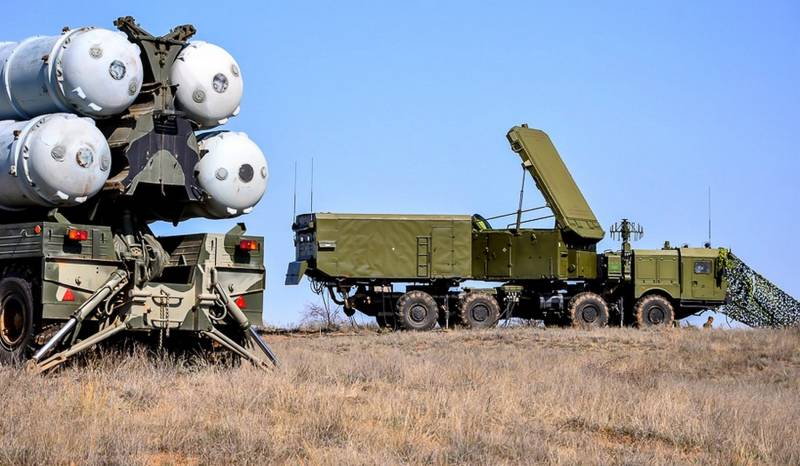
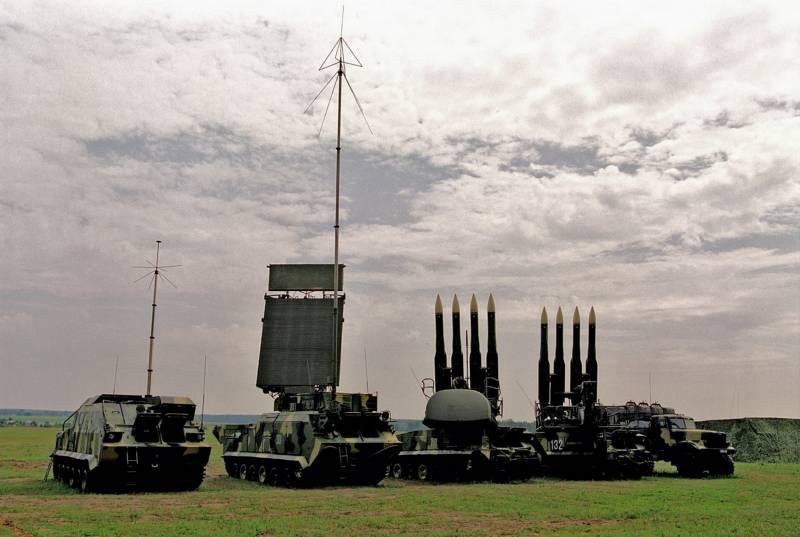
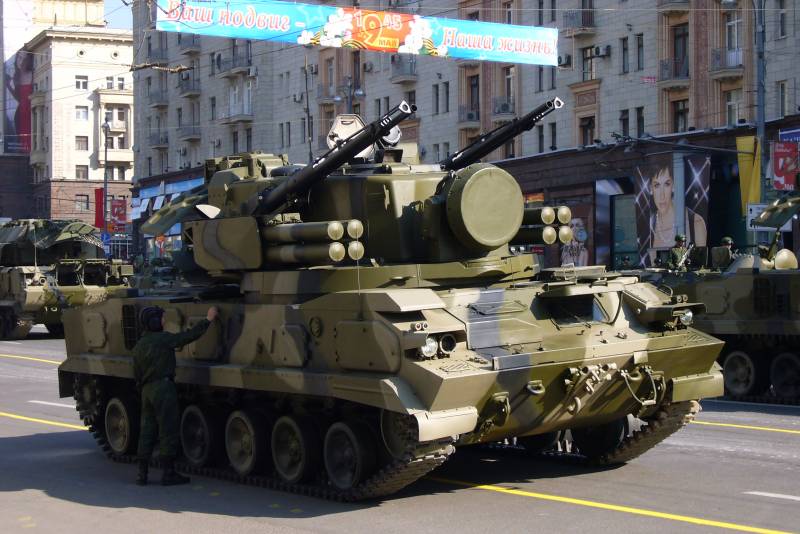
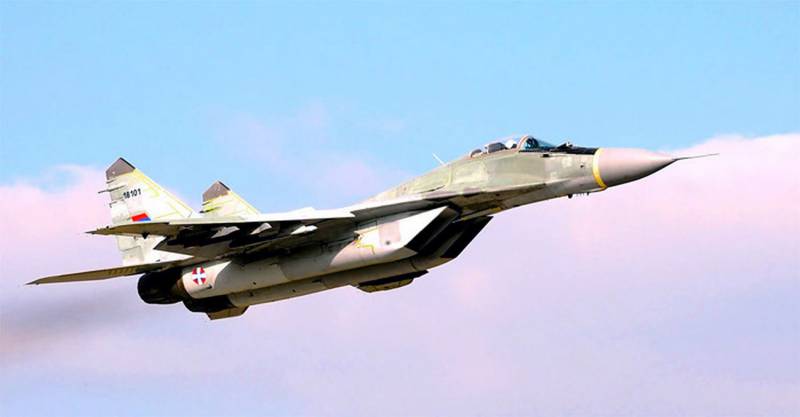
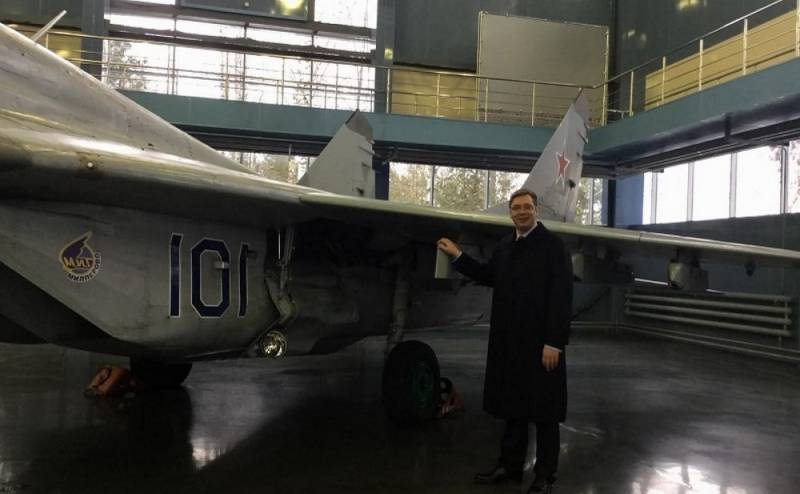
Information